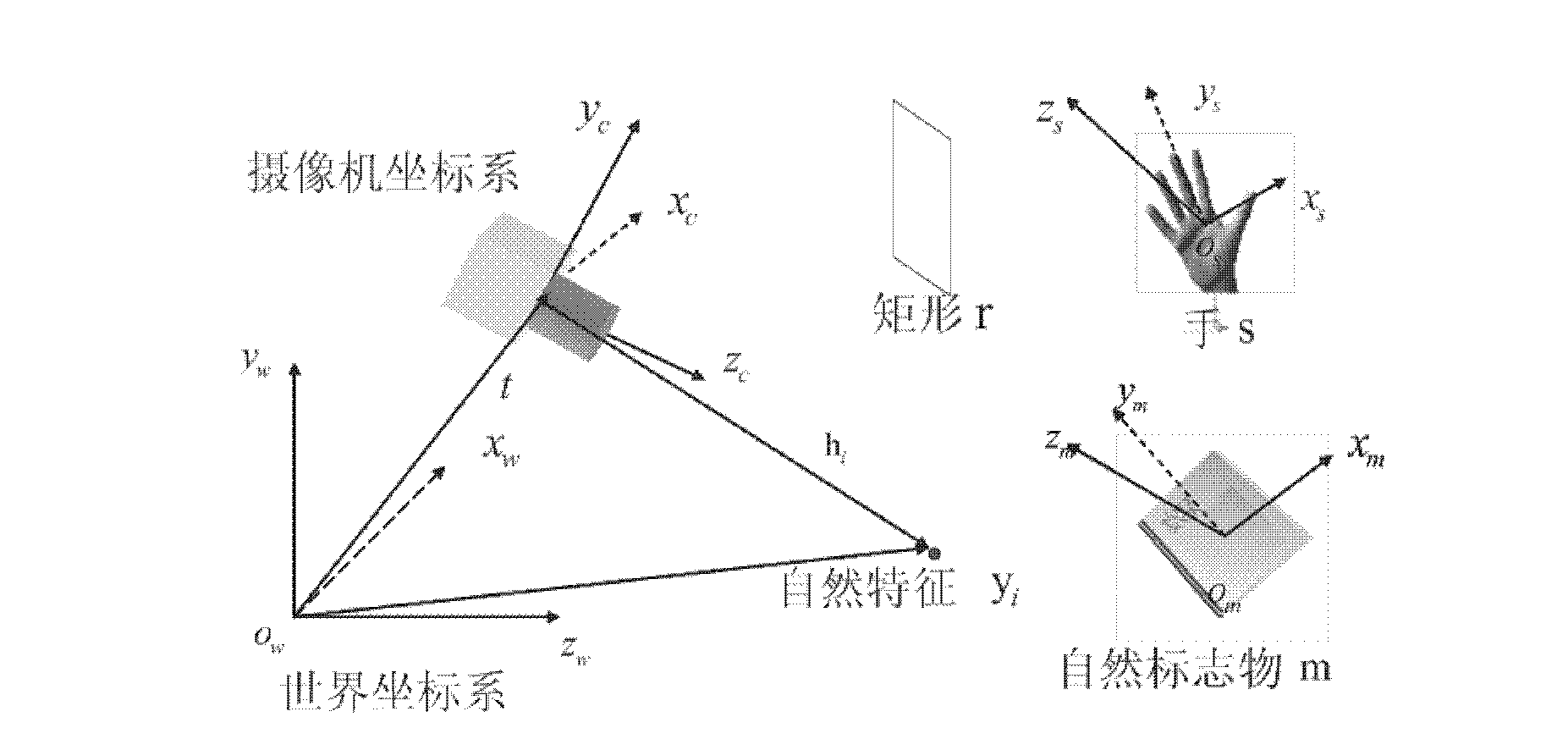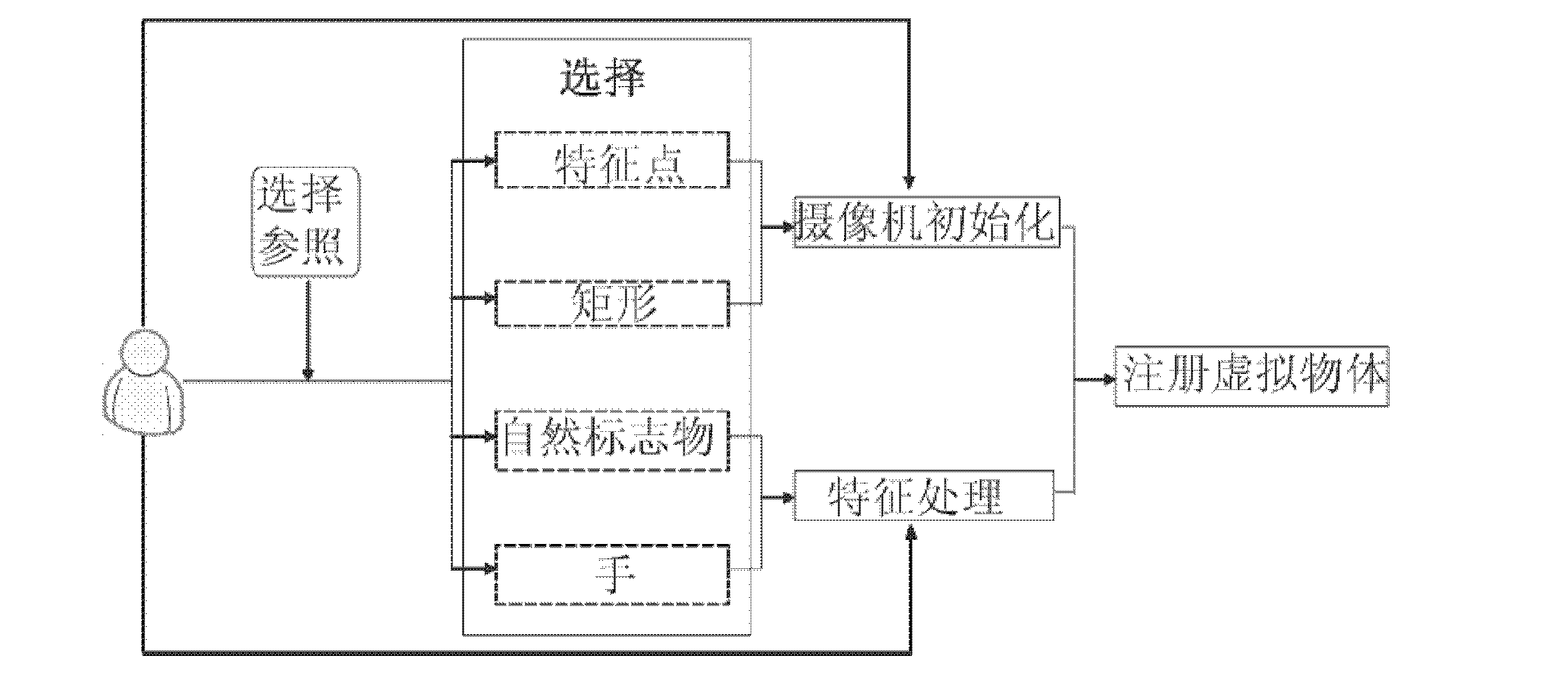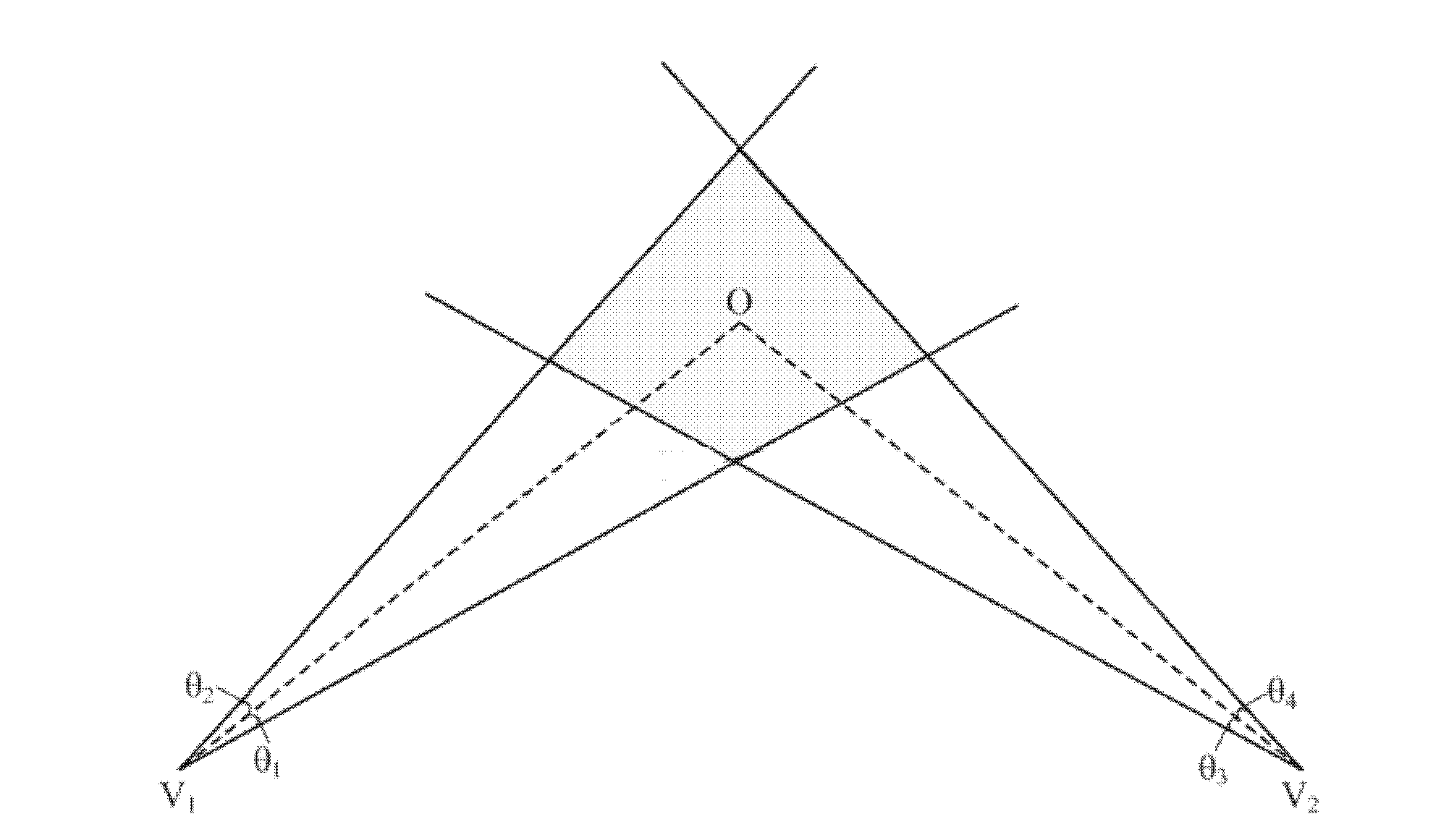Self-adaptation virtual and actual three-dimensional registration method based on multiple natural characteristics
A three-dimensional registration and self-adaptive technology, applied in image data processing, instruments, calculations, etc., can solve problems such as manual settings by users, unreal users, rich content, etc., and achieve the effect of improving tracking efficiency
- Summary
- Abstract
- Description
- Claims
- Application Information
AI Technical Summary
Problems solved by technology
Method used
Image
Examples
Embodiment Construction
[0035] The present invention will be further described below in conjunction with the accompanying drawings, so that those of ordinary skill in the art can implement it after referring to this specification.
[0036] Step 1, such as figure 1 As shown, a state space with multiple natural features is constructed: there are cameras in the scene, natural feature points to be tracked in the scene, rectangular features, natural landmarks and hands and other objects, the camera is selected as the moving object, and the feature points and rectangular features are all As static objects, natural landmarks and hands are tracked as moving objects, and then initialize the state space of multiple natural features: a state space based on scalable Kalman filtering framework is used to manage the state space of multiple natural features in the scene, in this framework, the state space With a covariance matrix can be expressed as follows:
[0037] X = ...
PUM
 Login to View More
Login to View More Abstract
Description
Claims
Application Information
 Login to View More
Login to View More - R&D
- Intellectual Property
- Life Sciences
- Materials
- Tech Scout
- Unparalleled Data Quality
- Higher Quality Content
- 60% Fewer Hallucinations
Browse by: Latest US Patents, China's latest patents, Technical Efficacy Thesaurus, Application Domain, Technology Topic, Popular Technical Reports.
© 2025 PatSnap. All rights reserved.Legal|Privacy policy|Modern Slavery Act Transparency Statement|Sitemap|About US| Contact US: help@patsnap.com



